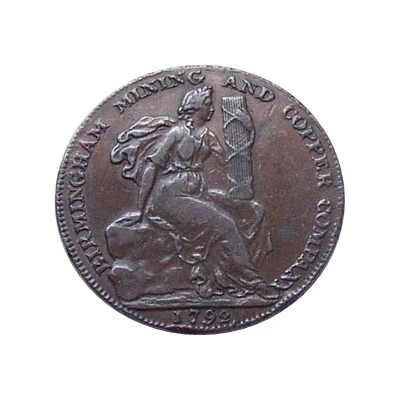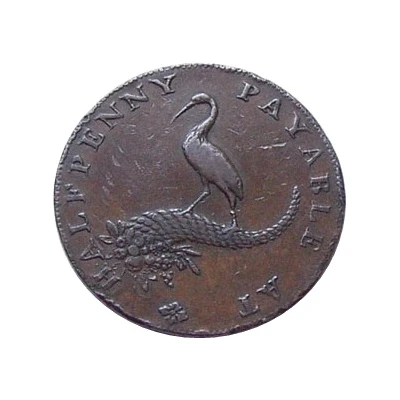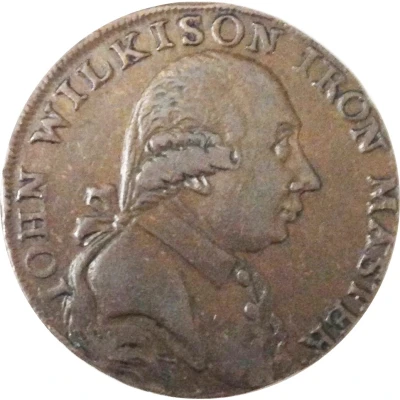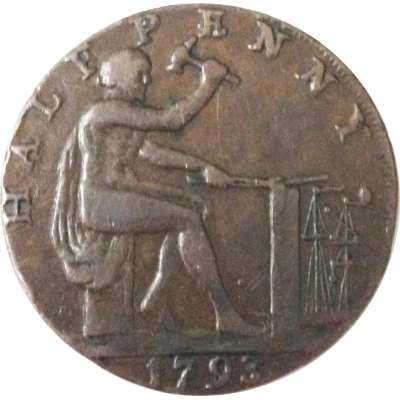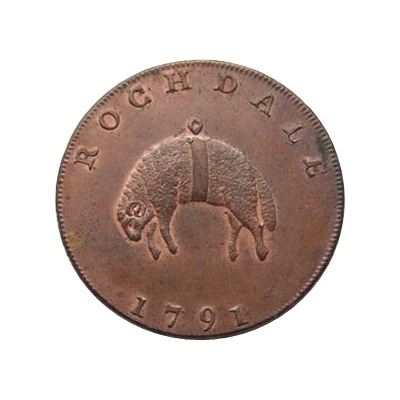
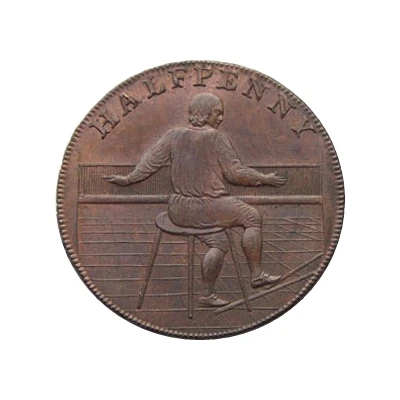

© ABC Coins & Tokens
½ Penny Lancashire - Rochdale / J. Kershaw
| Copper | 12 g | 28 mm |
| Issuer | United Kingdom (United Kingdom, British Overseas Territories and Crown Dependencies) |
|---|---|
| Type | Token |
| Years | 1791-1792 |
| Value | ½ Penny (1⁄480) |
| Currency | Conder tokens (1787-1797) |
| Composition | Copper |
| Weight | 12 g |
| Diameter | 28 mm |
| Thickness | 1.5 mm |
| Shape | Round |
| Technique | Milled |
| Orientation | Coin alignment ↑↓ |
| Demonetized | Yes |
| Updated | 2024-10-09 |
| Numista | N#80301 |
|---|---|
| Rarity index | 77% |
Reverse
Large scale detailed view from behind, of seated weaver working at loom, denomination above, toothed border
Script: Latin
Lettering: HALFPENNY
Engraver: John Gregory Hancock
Edge
Inscripted
NOTE: edge varieties exist
Lettering: PAYABLE AT THE WAREHOUSE OF JOHN KERSHAW · X ·
Comment
A halfpenny token issued by John Kershaw who was a mill owner in Rochdale. Tokens like this were issued by business owners as payment to their workforce, they were redeemable in local stores, usually also owned by that business owner. For example, mill owners used these tokens as workers' wages and the only way the workers could spend them was at shops owned by the owners. The unrest which this provoked is said to have led to the setting up of the first co-operative shop in 1844, The Rochdale Society of Equitable Pioneers.John Kershaw appears to have been a mercer and draper with a business in Rochdale, and is also thought to have been concerned with a woollen factory in the town. The manufacturer and the dies were by Hancock.
Interesting fact
One interesting fact about the Token ½ Penny (Lancashire - Rochdale / J. Kershaw) 1791-1792 from United Kingdom is that it was issued during a time of currency shortages and was used as a substitute for the official British coinage. The coin was minted by J. Kershaw, a private merchant, and was accepted as legal tender in the Rochdale area of Lancashire. Despite its small denomination, the coin was made of copper and weighed 12 grams, making it a substantial piece for its value.
